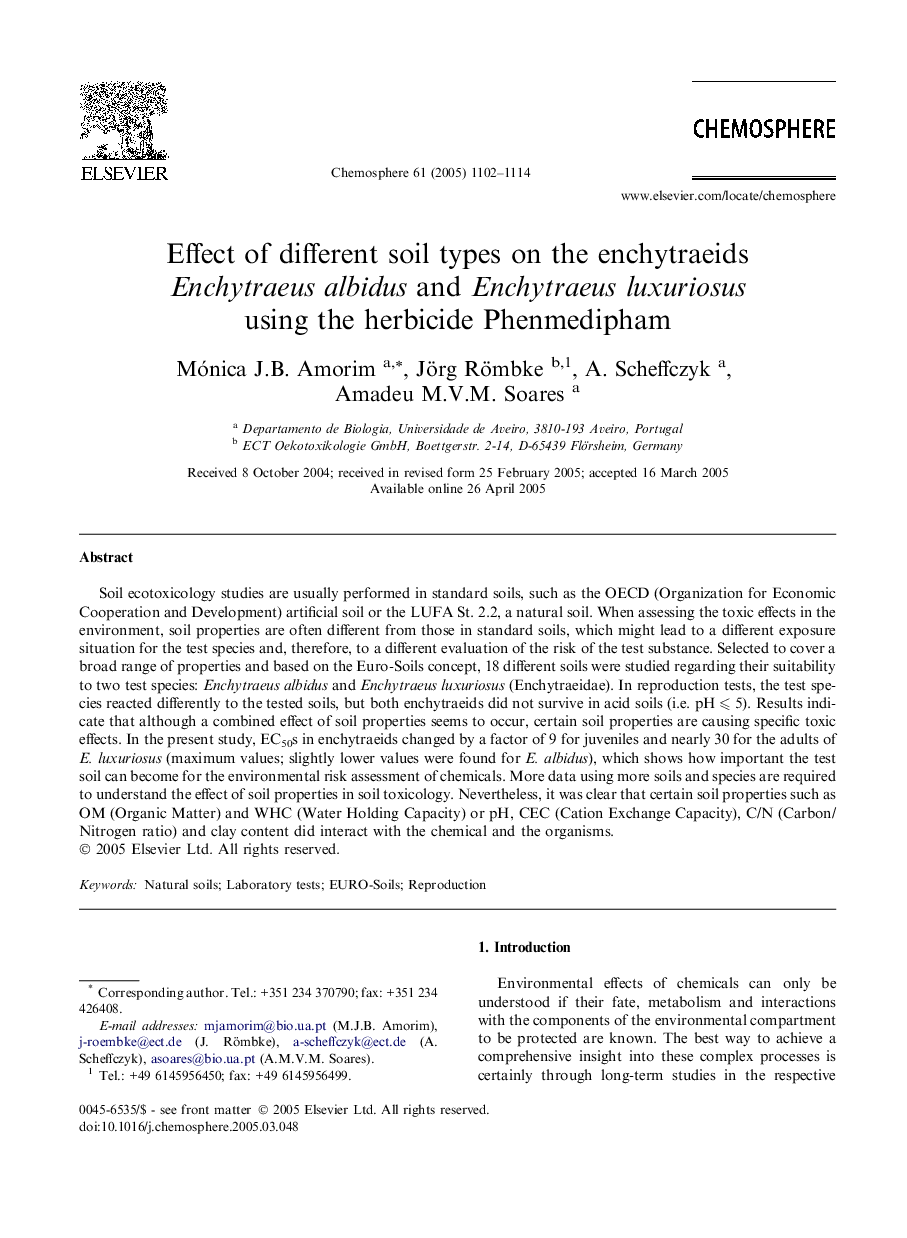| Article ID | Journal | Published Year | Pages | File Type |
|---|---|---|---|---|
| 9451395 | Chemosphere | 2005 | 13 Pages |
Abstract
Soil ecotoxicology studies are usually performed in standard soils, such as the OECD (Organization for Economic Cooperation and Development) artificial soil or the LUFA St. 2.2, a natural soil. When assessing the toxic effects in the environment, soil properties are often different from those in standard soils, which might lead to a different exposure situation for the test species and, therefore, to a different evaluation of the risk of the test substance. Selected to cover a broad range of properties and based on the Euro-Soils concept, 18 different soils were studied regarding their suitability to two test species: Enchytraeus albidus and Enchytraeus luxuriosus (Enchytraeidae). In reproduction tests, the test species reacted differently to the tested soils, but both enchytraeids did not survive in acid soils (i.e. pH ⩽ 5). Results indicate that although a combined effect of soil properties seems to occur, certain soil properties are causing specific toxic effects. In the present study, EC50s in enchytraeids changed by a factor of 9 for juveniles and nearly 30 for the adults of E. luxuriosus (maximum values; slightly lower values were found for E. albidus), which shows how important the test soil can become for the environmental risk assessment of chemicals. More data using more soils and species are required to understand the effect of soil properties in soil toxicology. Nevertheless, it was clear that certain soil properties such as OM (Organic Matter) and WHC (Water Holding Capacity) or pH, CEC (Cation Exchange Capacity), C/N (Carbon/Nitrogen ratio) and clay content did interact with the chemical and the organisms.
Related Topics
Life Sciences
Environmental Science
Environmental Chemistry
Authors
Mónica J.B. Amorim, Jörg Römbke, A. Scheffczyk, Amadeu M.V.M. Soares,
